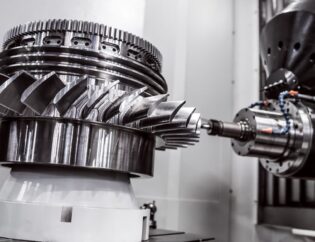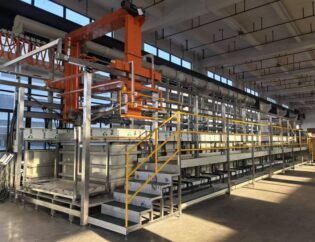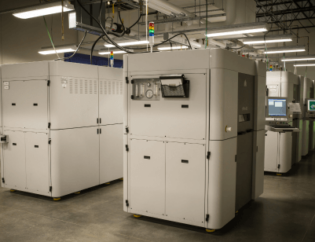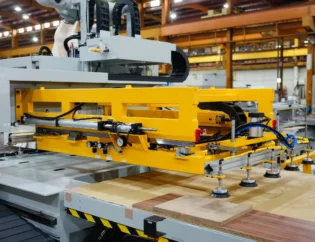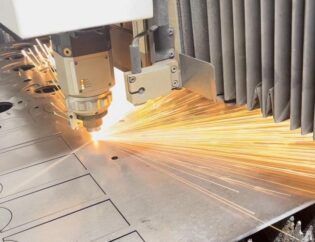CNC G10 is a crucial command in the realm of computer numerical control programming, specifically used for setting and modifying tool offsets and work coordinates. Understanding G10 is essential for machinists and programmers alike, as it directly impacts the precision and efficiency of machining operations. This guide will delve into the intricacies of G10, providing insights into its syntax, applications, and best practices.
Readers can expect to learn how to effectively implement G10 commands in their CNC programs, ensuring accurate tool positioning and enhanced workflow. We will explore practical examples, common pitfalls, and troubleshooting tips to help you master this command. By the end of this guide, you will be equipped with the knowledge to optimize your CNC machining processes and improve overall productivity.
G10: Setting Tool and Work Offsets in GCode – A Comprehensive Guide
CNC programming is essential for accuracy and efficiency in machining operations within the manufacturing industry. This article explains what G10 CNC code does, a command to set tool offsets and manage coordinate systems on CNC machines. We have tried to give an all-around comprehension of the working of G10 commands backed up by theoretical concepts and practical application examples with the intention that it shall help enhance programming efficiency. It doesn’t matter if you are new and need some basics or an expert who wants more skills; this inclusive guidebook will teach everything necessary to become a guru in G10 CNC programming and optimization of machining processes.
Understanding G10 G-Codes
G10 codes are pivotal in CNC programming for setting and adjusting tool offsets and coordinate values. This command allows programmers to define parameters such as tool offset values or reference points for workpiece coordinate systems. The syntax usually involves the code G10, followed by a relevant P address that designates the coordinate system (e.g., P1 for G54) and then values for the offsets (e.g., L, X, Y, Z). This feature enables machining accuracy, allowing quick adaptation to different tool geometries and workpiece setups, thereby improving programming efficiency and workflow.
Technical Features of G10
The G10 command is versatile and can be used in various CNC machines. Below is a comparison table highlighting the technical features of G10 across different CNC systems:
| Feature | Fanuc Controls | Haas Controls | LinuxCNC |
|---|---|---|---|
| Syntax | G10 L2 Pn X.. Y.. Z.. | G10 L2 Pn X.. Y.. Z.. | G10 L2 Pn X.. Y.. Z.. |
| Work Offsets | G54 to G59 | G54 to G59 | G54 to G59, G59.1 to G59.3 |
| Active Coordinate System | P0 (Active) | P0 (Active) | P0 (Active) |
| Additional Offsets | G54.1 P1 to P48 | Not typically available | G54.1 P1 to P300 |
| Command Type | Modal | Modal | Modal |
Types of G10 Commands
G10 commands can be categorized based on their functionality and application. Below is a comparison table that outlines the different types of G10 commands:
| Type | Description | Example Command |
|---|---|---|
| Work Offset Setting | Sets the work offset for a specific coordinate system | G10 L2 P1 X10 Y20 Z0 |
| Tool Offset Setting | Adjusts tool offsets in the tool table | G10 L10 P1 X0 Y0 Z0 |
| Active Coordinate System | Defines the active coordinate system | G10 P0 X0 Y0 Z0 |
| Additional Offsets | Accesses additional work offsets beyond G54-G59 | G10 L20 P1 X10 Y20 Z0 |
Practical Applications of G10
Using G10 commands can significantly enhance the efficiency of CNC operations. For instance, when setting up multiple workpieces on a fixture plate, G10 allows operators to automate the process of defining work offsets. This reduces the risk of human error and saves time, as operators can focus on other tasks while the machine handles the setup.
In environments where modular fixturing is employed, such as those described on www.cnccookbook.com, G10 commands can be used to quickly switch between different setups without manual recalibration. This is particularly useful in high-volume production settings where consistency and speed are critical.
Conclusion
G10 commands are a powerful tool in CNC programming, enabling operators to set and adjust tool and work offsets efficiently. By understanding the syntax and applications of G10, machinists can enhance their programming skills and improve the accuracy of their machining processes. Whether you are working with Fanuc, Haas, or LinuxCNC systems, mastering G10 will undoubtedly streamline your operations.
FAQs
1. What is the purpose of the G10 command in CNC programming?
The G10 command is used to set tool offsets and manage coordinate systems, allowing for precise adjustments in CNC machining.
2. How does G10 differ across various CNC systems?
While the basic syntax remains similar, the range of work offsets and additional features can vary between systems like Fanuc, Haas, and LinuxCNC.
3. Can G10 commands be used for both tool and work offsets?
Yes, G10 can be used to set both tool offsets and work offsets, making it a versatile command in CNC programming.
4. What are the benefits of using G10 in a production environment?
Using G10 reduces manual data entry errors, saves setup time, and allows for quick adjustments to different workpiece configurations.
5. Where can I learn more about G10 commands and their applications?
You can explore resources on websites like www.machiningdoctor.com, gcodetutor.com, and www.practicalmachinist.com for in-depth tutorials and guides on G10 commands.





